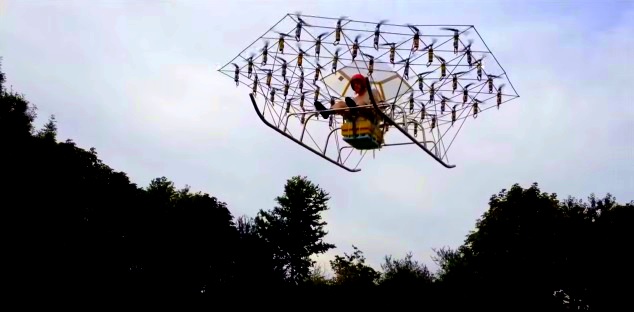
With the increased proliferation of smaller aircraft, or hobby drones, that are capable of flying under traditional radar, more unmanned aerial systems will be crowding the skies — and existing air traffic control systems won’t be able to track them. NASA and the Federal Aviation Administration have begun working with several partners in both the public and private sector to integrate and monitor drones in the airspace.
As one of the big players in the integration of drones into the national airspace, NASA has provided research and prototype methods for UAS traffic management systems, or UTMs, which would monitor drones vis-à-vis the traffic system established for traditional airline transportation.
Lockheed Martin has also developed a UTM. Mike Glasgow, who is the firm’s aviation services chief architect, told GCN that Lockheed UTM aims to provide UAS pilots with a flight service similar to that used by commercial and private pilots. Based on the flight services framework, it would “allow UAS operators to report where they are operating and [make] that data available to pilots and other airspace users.”
Lockheed’s UTM works with those government and commercial drones that have received special exemptions from the FAA to fly. First deployed in January, Lockheed’s UTM allows UAS operators to report where they will be operating. It then alerts other general aviation pilots in the area that these drones will be flying. Eventually, Lockheed wants to create a system in which pilots file flight plans and integrate an Adverse Condition Alerting Service that would send out emails or alerts with potential changes in flight plans or in flight paths.
Commercial use of drones is currently banned by the FAA unless the agency grants a special exception. But drones weighing less than 55 pounds can be considered “model aircraft” under the law — hobbyists my freely pilot such devices so long as they keep the drone in sight, fly no higher than 500 feet and stay at least five miles away from airports. These hobbyists are not required to file flight plans or NOTAMs. Glasgow, who is also a Lockheed Martin fellow, said Lockheed’s system was designed to be used by virtually anyone, but noted the problems associated with operators who can fly virtually without oversight.
NASA’s UTM prototypes will be rolled out under four builds, or phases, between August 2015 and March 2019. The first build, the agency said, “will create, analyze and manage trajectories and constraints that enable operations by an interactive system. The focus will be on geo-fencing, altitude ‘rules of the road’ and scheduling of vehicle trajectories.” The first build focuses on rural operations that include operation
According to Glasgow, the fundamental difference between Lockheed’s efforts and NASA’s is that Lockheed is “focused on deploying operational capabilities as quickly as possible as they become ready,” while NASA is working on a multiyear effort to prototype. “[NASA’s] building a UAS traffic management prototype, basically vet concepts and show how it could work,” he said, boiling down the difference as research vs. deployed operational capabilities.
NASA and the FAA have also partnered with others in industry to find ways to monitor thousands of new objects flying in the busiest and safest airspace.
For example, Amazon has proposed a segregated airspace below 500 feet, which “will buffer sUAS [small UAS] operations from current aviation operations. It will also buffer lesser-equipped vehicles from highly-equipped vehicles able to safely perform BLOS [beyond line of sight] missions.” The plan segregates the airspace outlining certain aircraft to operate in airspace below 200 feet, between 200 and 400 feet and between 400 and 500 feet.
Another aspect of monitoring UASs is the ability to establish geofences, or electronic barriers that prevent aircraft from flying into a particular region. At a recent NASA UTM conference, proposers demonstrated how users approved for a flight plan must enter a valid geofence into the UTM system prior to take-off. While there are several software programs and add-ons that are capable of geofencing, these tools are valid only for users that are required to file flight plans, which excludes model aircraft users. Additionally, some experts have warned that geofence software could be susceptible to hackers.
About the Author
Mark Pomerleau is an editorial fellow with Defense Systems and GCN.
http://gcn.com/articles/2015/08/31/drones-utm.aspx







